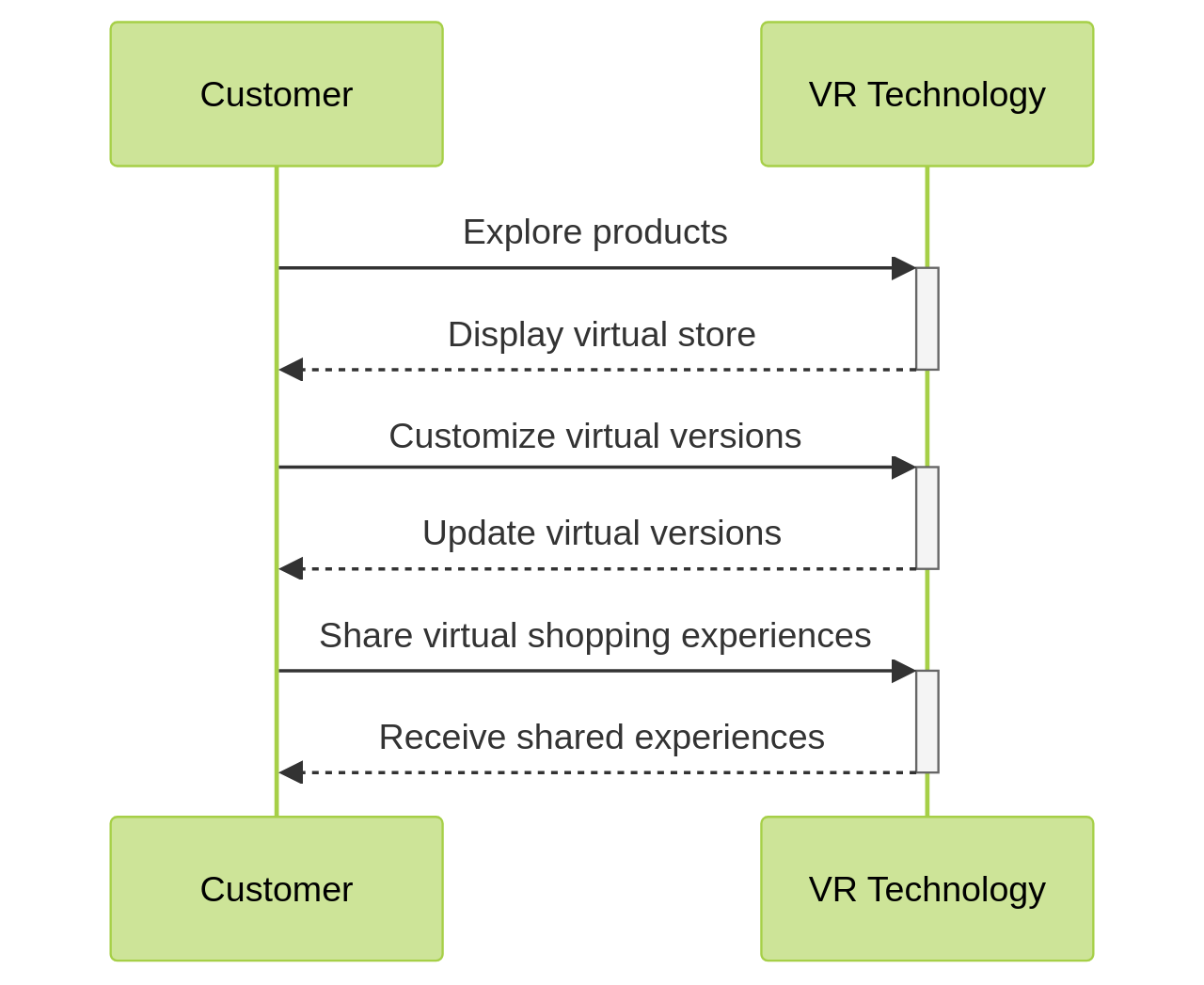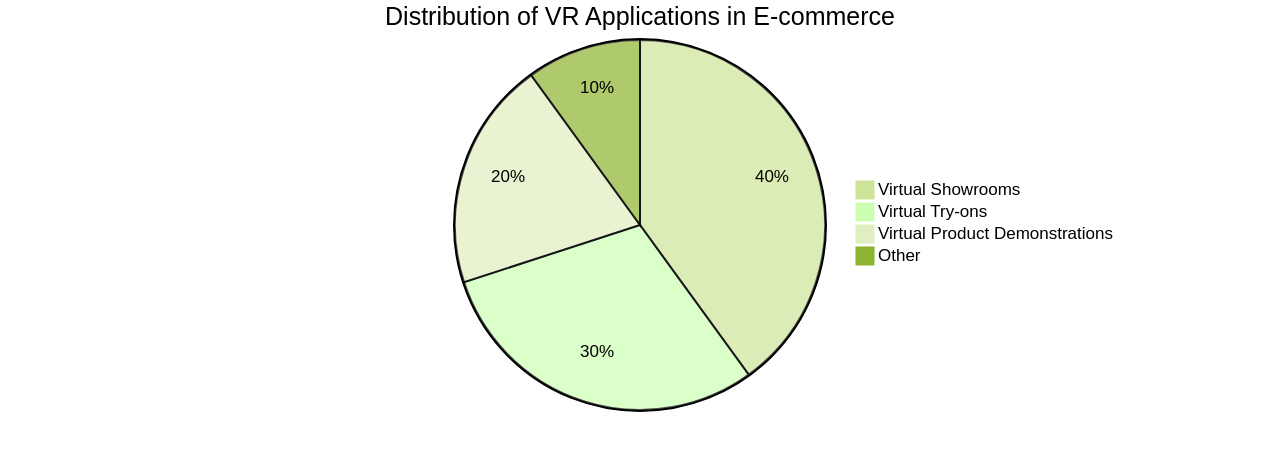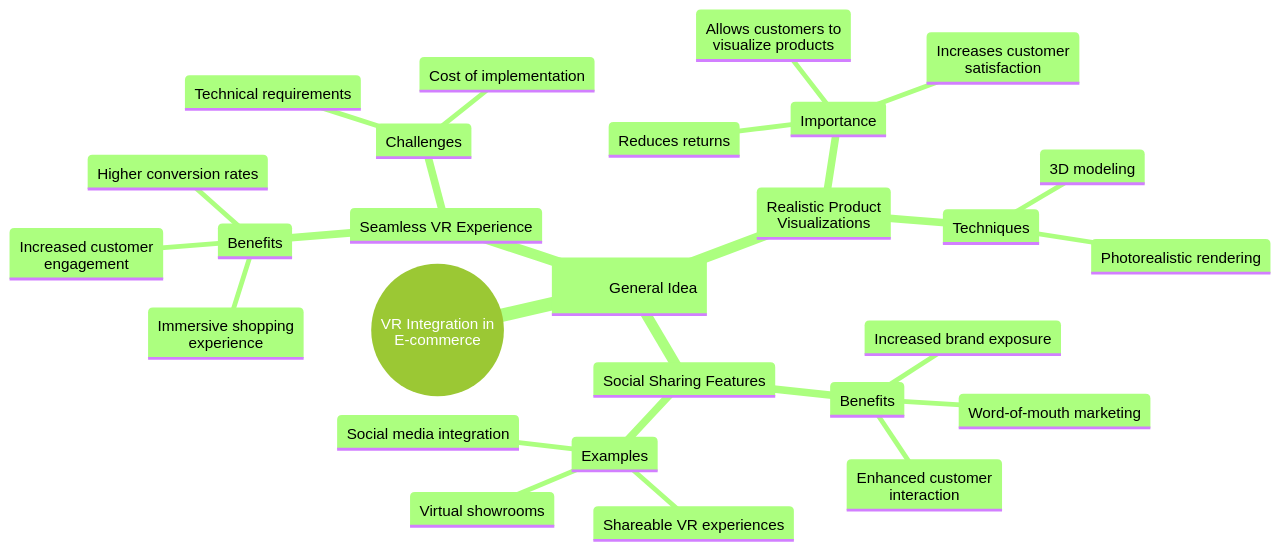Introduction
The role of Virtual Reality (VR) in e-commerce is transforming the way customers shop online, offering an immersive and interactive shopping experience that goes beyond traditional methods. VR technology allows customers to explore products in a realistic setting, influencing their purchasing decisions and making it a powerful tool for e-commerce businesses. In this article, we will delve into the impact of VR on the customer shopping experience, explore successful case studies of VR implementation in e-commerce, discuss the challenges and solutions in integrating VR, and look at future trends in this evolving landscape. By leveraging VR technology, businesses can enhance customer engagement, satisfaction, and ultimately drive sales in the ever-growing e-commerce industry.
1. Understanding the Role of VR in E-commerce
Virtual Reality (VR) is a groundbreaking technology that is revolutionizing the e-commerce industry by providing an immersive, interactive shopping experience that surpasses traditional online shopping. VR simulates a three-dimensional environment, enabling customers to explore products in a realistic setting, enhancing their understanding and perception of the product. This immersive experience can significantly influence purchasing decisions, making VR a potent tool for e-commerce businesses. Companies like BestToolbars are leading the way in leveraging VR technology to enhance the online shopping experience by offering solutions that integrate VR into e-commerce platforms.
Discover how BestToolbars can enhance your e-commerce platform with VR technology.
To effectively integrate VR technology into e-commerce platforms, it's crucial to ensure that the VR experience is seamless and user-friendly.

This involves optimizing the VR content for fast loading times and smooth performance, providing clear instructions or tutorials for users on how to navigate and interact with the VR interface. Offering realistic and immersive product visualizations is another best practice. High-quality 3D models and textures that accurately represent the physical products can achieve this. Additionally, consider integrating interactive features that enable users to customize or try on virtual versions of the products.
Optimizing the VR experience for mobile devices is also essential, ensuring compatibility with popular VR headsets and smartphones, and optimizing the VR content for mobile performance. Lastly, consider incorporating social sharing features into the VR experience, allowing users to share their virtual shopping experiences, promoting your e-commerce platform, and increasing engagement.
E-commerce businesses that successfully implement VR technology for product visualization provide their customers with an immersive experience and a realistic view of products. This technology enables customers to virtually try on clothes, walk through virtual stores, and even see how furniture or home decor items will look in their space. By incorporating VR technology, e-commerce businesses can enhance the online shopping experience and provide customers with a better understanding of their products before making a purchase.

In conclusion, by leveraging VR technology, online retailers can provide a more immersive, realistic, and personalized shopping experience, leading to increased customer engagement, satisfaction, and ultimately, sales.
2. The Impact of VR on Customer Shopping Experience
Virtual Reality (VR) offers an innovative way to transform the online shopping experience.

By leveraging VR, customers can engage with products in a more immersive and interactive manner. Virtual showrooms, for instance, allow customers to explore and interact with products in a lifelike environment, providing a realistic sense of the product before they decide to purchase.
VR also offers the exciting feature of virtual try-ons. This feature is particularly beneficial for industries like fashion, eyewear, and cosmetics, where customers can virtually 'try on' products, enhancing their shopping experience, reducing the need for physical try-ons, and potentially decreasing return rates.
Moreover, the implementation of VR in e-commerce isn't limited to these examples. VR can also be used for virtual product demonstrations, where customers can experience and visualize the functionality of a product before buying, thus improving their understanding of the product's features and functionality.
To create a seamless VR experience, it's crucial to ensure compatibility with various VR devices and optimize the VR experience for smooth navigation and performance.

High-quality product visuals are essential, along with intuitive navigation and user-friendly controls.
Moreover, incorporating social sharing capabilities can enhance the shopping experience by allowing customers to share their virtual shopping experiences with friends. Gathering user feedback and continuously iterating and improving the VR integration based on user preferences and needs is also key to ensuring a successful VR shopping experience.
In a nutshell, integrating VR into online shopping can significantly enhance the customer's shopping experience, increase engagement, and drive sales, making it a game-changer in the realm of e-commerce.
3. Case Studies: Successful Implementation of VR in E-commerce
Several e-commerce businesses are turning to Virtual Reality (VR) to augment their online shopping experiences. A notable example is IKEA, which has crafted a VR app allowing customers to virtually explore kitchen designs and modifications. Another industry giant, Alibaba, has introduced a VR shopping experience where customers can peruse products in a virtual mall, simulating the experience of being in a physical store.
VR enables an immersive, realistic shopping experience. Customers can interact with products, visualize how they would fit into their personal space, try on virtual clothing, and even navigate through virtual showrooms. This technology is revolutionizing the e-commerce industry by bridging the gap between online and offline shopping experiences, enhancing customer engagement and product visualization.
To ensure a seamless VR shopping experience, businesses must prioritize user-friendly design, high-quality visuals, and realistic simulations. Integrating VR technology with e-commerce functions such as product catalogs and shopping carts can provide a cohesive and convenient shopping experience. Gathering user feedback and making improvements based on customer preferences and needs is also crucial for the successful implementation of VR in e-commerce.
Innovative solutions for VR implementation in e-commerce are available from experienced providers such as BestToolbars.net.
Consult with BestToolbars to craft custom VR solutions for your e-commerce business.
They offer a team of software developers, designers, and engineers who can craft custom solutions, whether that's VR integration into an existing online store or a complete VR shopping platform. They also provide consultation services, helping businesses launch an MVP product, test its market fit, and ensure alignment with market trends.
The potential of VR to transform the e-commerce landscape is evident, and businesses seeking to leverage this technology can learn valuable lessons from the successes of IKEA, Alibaba, and others.
4. Challenges and Solutions in Implementing VR for E-commerce
Implementing Virtual Reality (VR) in the e-commerce industry, while promising, does come with its own set of challenges.

The cost of VR equipment, the necessity of high-speed internet for a smooth VR experience, and the risk of motion sickness in users are a few of these challenges. However, the industry is rapidly developing solutions to address these issues.
To tackle the high cost of VR equipment, businesses can consider outsourcing development and testing tasks to specialized companies. This strategy enables businesses to access top-tier talent, benefit from cost-effective and flexible demand contractors, and expedite development and testing processes. This approach minimizes the upfront investment in expensive VR equipment and allows businesses to align their products with the market while fixing any bugs or issues.
In terms of high-speed internet requirements for VR e-commerce, software developers, designers, and engineers can craft innovative solutions tailored to specific needs. Companies like BestToolbars.net offer access to top-tier talent and flexible, cost-effective solutions, such as on-demand contractors, to speed up development and test hypotheses.
Accelerate your VR development with BestToolbars' top-tier talent and flexible solutions.
Full outsourcing is also an option for companies looking to leverage the expertise of a dedicated team.
Addressing motion sickness in VR e-commerce experiences requires a holistic approach that combines design, user experience, and technical solutions. Minimizing factors known to induce motion sickness, such as sudden movements or rapid changes in perspective, can help. Implementing smooth and gradual transitions between scenes or objects can contribute to a more comfortable VR experience. From a technical perspective, optimizing frame rates and reducing latency can help create a smoother and more immersive VR environment.
To optimize VR experiences for different internet speeds in e-commerce, businesses can implement various techniques such as adaptive streaming techniques, content optimization, and user settings customization. These strategies ensure a smooth and immersive VR experience for users with varying internet speeds.
Finally, when implementing VR in e-commerce, it is crucial to ensure a seamless and user-friendly VR experience. This includes optimizing the VR content for different devices, offering high-quality visuals, integrating VR technology with other e-commerce functionalities, and continually gathering user feedback for improvements.
5. Future Trends: The Evolving Landscape of VR in E-commerce
E-commerce is on the cusp of a significant transformation with the rise of Virtual Reality (VR), a technology that brings immersive and interactive elements to online shopping. This technology is expected to influence the future of e-commerce by enhancing customer engagement and driving sales. For instance, VR can offer customers the opportunity to virtually try on clothes, visualize furniture within their own homes, or even take a virtual tour of properties before making a purchase.
Moreover, VR can elevate the online shopping experience by providing a realistic and interactive view of products, thereby reducing the likelihood of returns and enhancing customer satisfaction. Businesses can leverage VR technology to create virtual showrooms, showcasing their products in a simulated environment, which can result in cost savings on physical space.
The integration of VR with Artificial Intelligence (AI) can further personalize the shopping experience based on user preferences and behavior. AI algorithms can recommend products, suggest personalized offers, and provide real-time assistance during the shopping process. This combination of VR and AI can lead to a more engaging and interactive shopping experience, catering to individual customer needs.
To effectively implement VR in e-commerce, businesses must ensure seamless integration between the VR experience and the e-commerce platform, focusing on optimizing load times, minimizing latency, and providing smooth navigation within the virtual environment. The creation of realistic and visually engaging 3D models of products, incorporating interactive elements such as product customization and real-time product demonstrations, can further enhance user engagement.
The future of e-commerce lies in these immersive, interactive experiences that engage customers on a deeper level, and VR is set to play a pivotal role in this evolution. The successful integration of VR into e-commerce strategies has already been demonstrated in numerous case studies, showing its potential in providing immersive product visualization, virtual try-on capabilities, and interactive shopping environments. As technology advances, we can expect to see more realistic and immersive VR experiences, further enhancing the online shopping experience.
Conclusion
In conclusion, Virtual Reality (VR) is transforming the e-commerce industry by providing an immersive and interactive shopping experience that goes beyond traditional methods. By allowing customers to explore products in a realistic setting, VR technology influences purchasing decisions and enhances customer engagement. Successful case studies, such as IKEA and Alibaba, have demonstrated the effectiveness of integrating VR into e-commerce platforms. To ensure a seamless VR experience, businesses should prioritize user-friendly design, high-quality visuals, compatibility with various devices, and social sharing capabilities.
The impact of VR on the customer shopping experience cannot be underestimated. It offers virtual try-ons, realistic product visualizations, and interactive demonstrations that enhance understanding and reduce return rates. Challenges in implementing VR for e-commerce, such as cost, internet speed requirements, and motion sickness risks, can be addressed through outsourcing development tasks and optimizing design elements. The future of VR in e-commerce looks promising, with trends such as AI integration and personalized experiences on the horizon. By leveraging VR technology, businesses can enhance customer satisfaction and drive sales in the ever-evolving e-commerce industry.
To start leveraging the benefits of VR in your e-commerce business today, visit BestToolbars.net.





